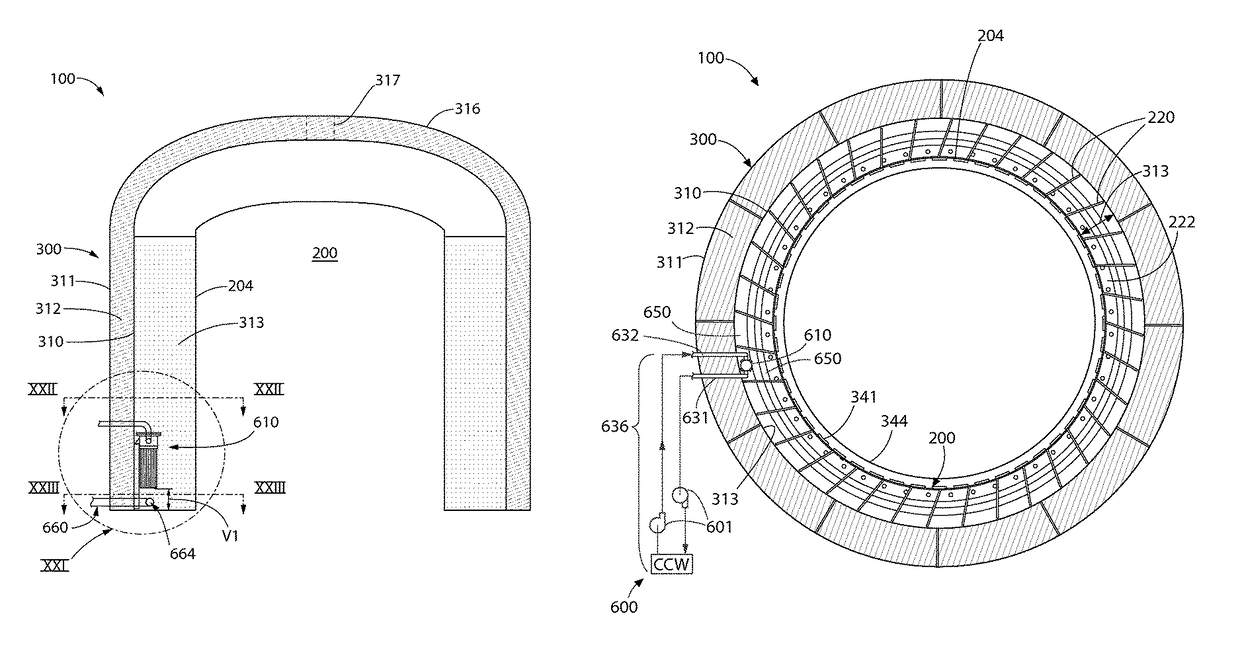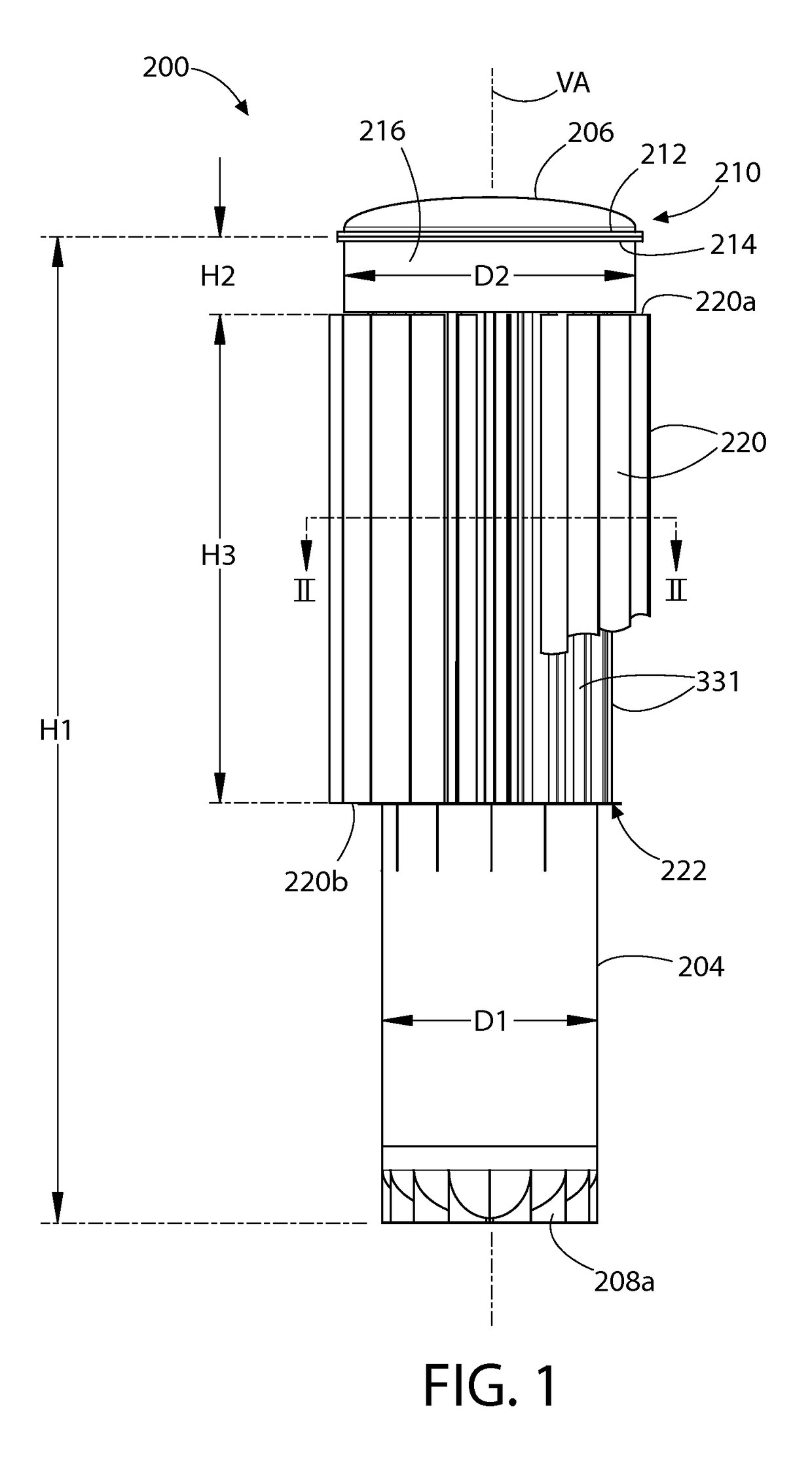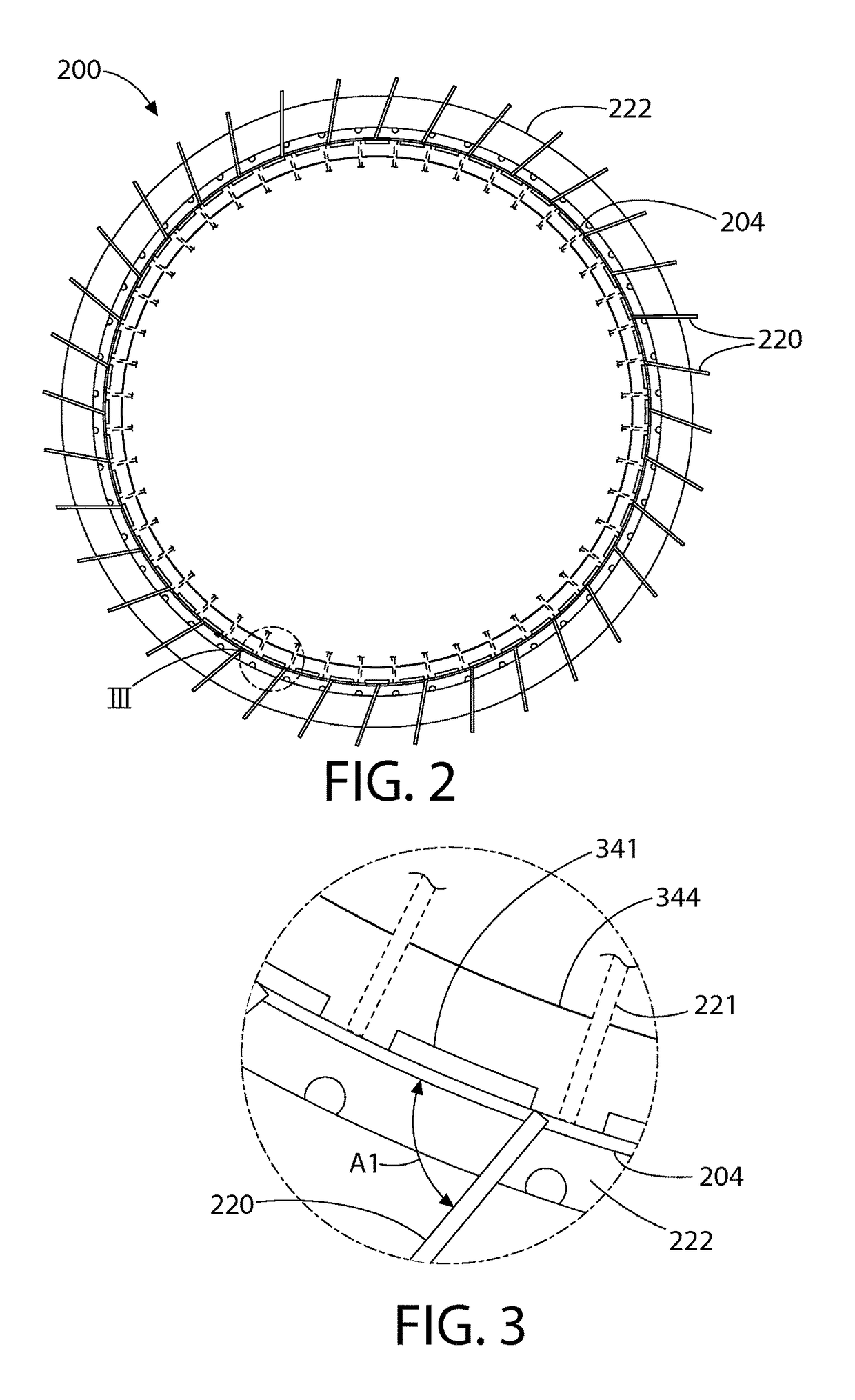Component cooling water system for nuclear power plant
a technology for cooling water systems and nuclear power plants, applied in nuclear engineering, nuclear elements, greenhouse gas reduction, etc., can solve the problems of rapid rise of pressure and temperature in the containment space, reactors becoming a “scram”, and the installation of a large capital requirement such as a steam generator is extremely difficult and expensive, so as to prevent warping
- Summary
- Abstract
- Description
- Claims
- Application Information
AI Technical Summary
Benefits of technology
Problems solved by technology
Method used
Image
Examples
Embodiment Construction
[0053]The features and benefits of the invention are illustrated and described herein by reference to illustrative embodiments. This description of illustrative embodiments is intended to be read in connection with the accompanying drawings, which are to be considered pan of the entire written description. In the description of embodiments disclosed herein, any reference to direction or orientation is merely intended for convenience of description and is not intended in any way to limit, the scope of the present invention. Relative terms such as “lower,”“upper,”“horizontal,”“vertical,”“above,”“below,”“up,”“down,”“top” and “bottom” as well as derivative thereof (e.g., “horizontally,”“downwardly,”“upwardly” etc.) should be construed to refer to the nominal orientation as then described or as shown in the drawing under discussion. These relative terms are for convenience of description only and do not require that the apparatus be constructed or operated in a rigorously specific orient...
PUM
 Login to View More
Login to View More Abstract
Description
Claims
Application Information
 Login to View More
Login to View More - R&D
- Intellectual Property
- Life Sciences
- Materials
- Tech Scout
- Unparalleled Data Quality
- Higher Quality Content
- 60% Fewer Hallucinations
Browse by: Latest US Patents, China's latest patents, Technical Efficacy Thesaurus, Application Domain, Technology Topic, Popular Technical Reports.
© 2025 PatSnap. All rights reserved.Legal|Privacy policy|Modern Slavery Act Transparency Statement|Sitemap|About US| Contact US: help@patsnap.com



